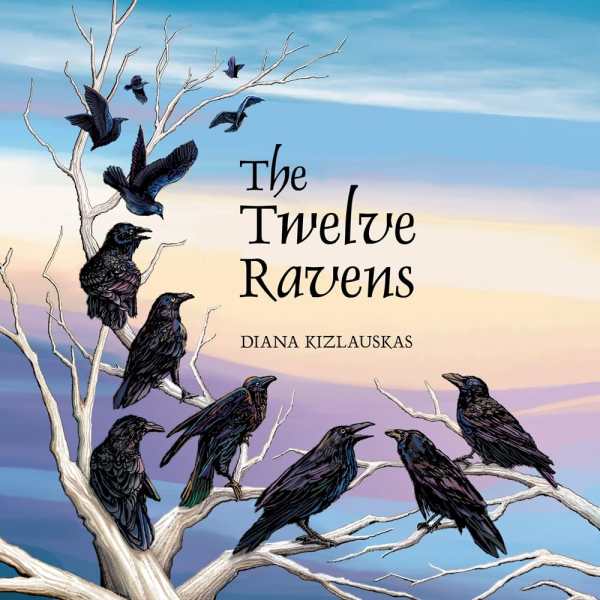The Twelve Ravens
A Lithuanian Folktale
A classic fairy tale is refreshed in the picture book The Twelve Ravens, about a girl’s persistence in saving her brothers from their wicked stepmother’s curse.
In Diana Kizlauskas’s lavish picture book The Twelve Ravens, a Baltic girl saves her brothers from their wicked stepmother through sacrificial love.
Told in the form of a ballad, this energetic adaptation of a Lithuanian folktale includes familiar archetypes of good and evil. It begins with a once-wealthy widower who has twelve sons and a daughter, Mildute. He marries Ragana, a baroness who is, in fact, a witch. Hardships follow, and the children’s continuing joy, even when they must live in a hut and labor on a farm, angers Ragana. She casts a spell that transforms the sons into ravens.
Because Mildute is “brave and pure,” she’s viewed as the only one who can restore her missing brothers. Her characterization is sincere and simple: She’s drawn with blonde braids and a cherubic face, and she greets each new circumstance with an even-mindedness that’s free of despair. Her “goodness,” which can overcome the curse, is evident in her enterprising, adventure-prone personality.
The plot progresses in clear stages. Natural rhymes and crisp, lively conversations drive its momentum. When Mildute leaves her village, she meets three separate hermits; they inquire of the clouds, wind, and birds about the ravens’ whereabouts. In time, help arrives in the form of an eagle.
Some developments are covered in too-brisk terms, though, as with the passage of a dozen years in a short span; the arrival of key figures just when they are most needed strains credulity. The revelation of a twist to Ragana’s curse, which then places a new burden on Mildute, is also abrupt. And some questions remain unanswered, including why Mildute, among all of her siblings, was spared in the beginning. Still, her inspiring steadfastness to telling the truth leads to a satisfying conclusion that includes justice for Ragana.
The jewel-toned illustrations complement the bucolic fairy-tale settings well, featuring emerald green farmlands, a carved wooden arbor, intricate embroidery on clothing, and snow-laden landscapes. Cultural elements, including painted ceramics and foods at a wedding feast, honor the Baltic setting, and the fantasy elements, including cloud faces and the brothers’ transformations from ravens back into men, are well expressed. Birds’ feathers, autumn leaf colors, and sunsets are rendered in gorgeous terms.
In the endearing picture book The Twelve Ravens, a family overcomes a curse thanks to a determined daughter.
Reviewed by
Karen Rigby
Disclosure: This article is not an endorsement, but a review. The publisher of this book provided free copies of the book and paid a small fee to have their book reviewed by a professional reviewer. Foreword Reviews and Clarion Reviews make no guarantee that the publisher will receive a positive review. Foreword Magazine, Inc. is disclosing this in accordance with the Federal Trade Commission’s 16 CFR, Part 255.

